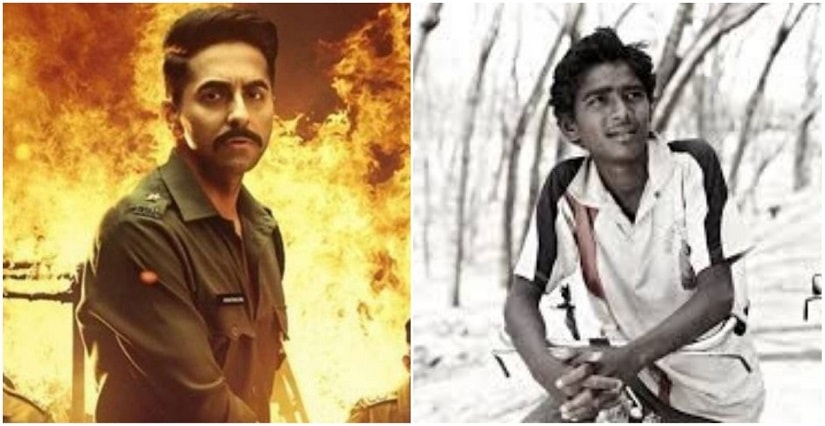Much of the acclaim surrounding Anubhav Sinha’s Article 15 centres on the film having ‘caste’ as its central theme — a subject only infrequently dealt with in mainstream cinema. However, the form and location from which its story is told is hardly new. In fact, it’s more of the same-old. What has remained common, static — and consequently, putrefied — in Bollywood movies from the 1970s onwards (the ‘Angry Young Man’ era) until Article 15, is the Savarna protagonist’s rage against oppression, and subsequent quest for justice. The Savarna-as-saviour character has, therefore, been skillfully consolidated in the popular imagination, while simultaneously erasing the history of Dalit characters (if any) in these films. Article 15 goes a step further: it creates the binary of the Good Brahmin (in the character of Ayan Ranjan) and Bad Brahmin (as Mahant). The subtext, if one were to decode it in the context of the current political scenario, suggests that if the Bad Brahmin has furthered the fascist mood of the nation, then only the Good Brahmin can rectify it and save the masses. [caption id=“attachment_6911541” align=“alignnone” width=“825”]  To understand why Article 15 (L) isn’t as progressive or great a film as it’s being hailed to be, we need only contrast it with Nagraj Manjule’s Fandry (R)[/caption] Sinha’s film suggests that its Brahmin protagonist not only has the vision and capacity to deliver justice (no matter how ignorant he is about the social realities of caste until posted to a village in Uttar Pradesh), but also that in the new world order, educated Brahmins (as against the priestly versions of yore) will be the reference point for liberation. What hasn’t changed even in these most “progressive” of mainstream films, is the tendency of their Savarna directors to show Savarna protagonists struggling on behalf of the Dalit community. To understand why Article 15 isn’t as progressive or great a film as it’s being hailed to be, we need only contrast it with Nagraj Manjule’s Fandry. If Article 15 is the work of a Savarna director whose political unconscious produces a Brahmin protagonist, Fandry – the creation of a Dalit filmmaker – had the first-ever Dalit protagonist in a Marathi movie. Both films’ stories revolve around the plight of Dalits at the hands of local landlords/Savarnas, but the treatment is wholly different – and illuminating. In Article 15, Dalits are portrayed as subjects without history but Fandry depicts their struggles, aspirations and dreams. To balance the moral position with the Good Brahmin (the protagonist), Article 15 has a Dalit constable character, who is shown confessing to be one of the culprits of a pivotal crime, and committing suicide out of guilt. On the other hand, Fandry establishes – convincingly – that Dalits are more likely to be the victims of crimes perpetrated by Savarnas. If Article 15 hides portrays the mere reaction of the Brahmin saviour as his guilt, Fandry makes the Dalit protagonist the narrator of his own story, and eventually, his own liberator. If Article 15 shows Dalits making the wrong choices in trying to achieve their goals (for instance, the Bhim Sanghrash Sena leader being killed in an encounter), Fandry tells us how Dalits historically came to choice where the only agenda is the annihilation of caste, by directly attacking its roots. This historical self of the Dalit community is missing in Sinha’s direction of Article 15; it falsely convinces us that Dalits are unable to rebel in a productive way, that they resort to either violence or submissiveness when it comes to their oppression. Article 15’s hero appears to be ignorant of his caste location, attendant privileges, and the society around him; he sympathises with victims of caste crimes only when he enters into the law and order system, as part of his duty. But Fandry’s hero is fully aware of his social location, knows social norms and oppression – yet develops aspirations and dreams; he is the victim of caste crimes, and therefore inherits the instinct of breaking the norms of caste when these make his life impossible to live. The common factor between both these films is their thematic subject of Dalit lives and stories. However, while Fandry appears to us real, Article 15 emerges as a controversial depiction of a caste-crime. In Fandry, we see the oppressed coming to realise his oppression and rebelling against it. Unfortunately, Article 15 never offers Dalits the scope to be their own liberators. A great film isn’t just one which tells us a great story convincingly. A great film is one which doesn’t erase the history of its characters. In this sense, Article 15 is a film with serious content – told through the same old hegemonic gaze. Yogesh Maitreya is a poet, translator and founder of Panther’s Paw Publication, an anti-caste publishing house. He is pursuing a PhD at the Tata Institute of Social Sciences, Mumbai.
To understand why Article 15 is not as progressive a film as it’s being made out to be, we need to look at the Nagraj Manjule-directed Fandry
Advertisement
End of Article


)
)
)
)
)
)
)
)
)



